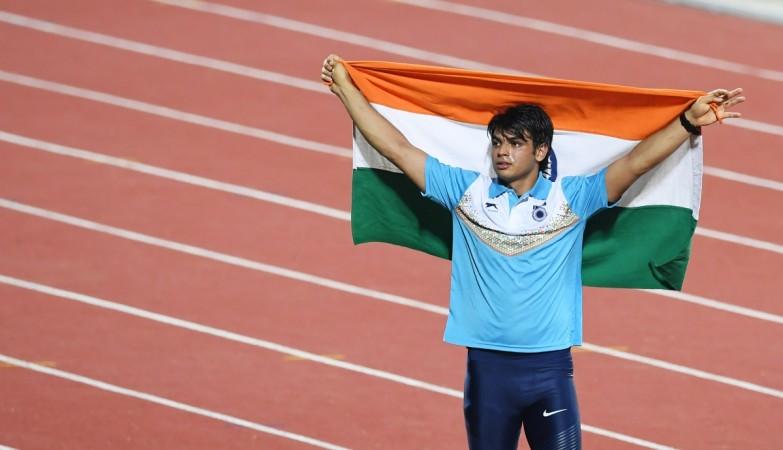India created history on Sunday, July 10 when the host nation finished on top of the medal tally, pushing Asian track and field giants China to the second spot at Asian Athletics Championships 2017.
READ: Full list of winners from India
Bagging 12 gold medals, four more than China, India ended its four-day campaign at the Kalinga Stadium in Bhubaneswar with a total of 29 medals, thereby surpassing their previous best of 22 medals at the 1985 meet in Jakarta.
India had notably won 13 overall medals at the 2015 event in Wuhan. However, when it was announced that the hosts would go in with a strong 95-member contingent, expectations began to shoot up.
The historic medal tally though has come as a surprise. Right from the opening day, the home athletes were in top gear, winning medals at will. Apart from the big names, who were favourites in their respective events, quite a few others also joined the party in Odisha.
Here are a few reasons explaining how the hosts went on to reign supreme at the four-day continental event.
Top global athletes skip continental meet
Odisha Chief Minister Naveen Patnaik, who was instrumental in getting the venue ready on short notice, has hailed India's efforts as "giant leap for athletics in the country". Yes, the performances of the local athletes will be a big boost to the camp and the support staff ahead of next year's crucial Asian Games and Commonwealth Games.
However, it is hard to ignore that teams like China, Qatar and Japan, who are traditional powerhouses on the track and field, decided to rest their big names ahead of next month's World Championships in London.
The top global athletes had already sealed berths for the world meet and skipped the continental meet to prepare for the stiffer tests in the upcoming world meet. Big names from China and Japanese sprinters Abdul Hakim Sani Brown and Shuhei Tada were notable exclusions.
Despite the absence of the big stars, the Indian athletes still needed to get out there and perform, and they exactly did that. 11 gold medallist now have sealed World Championship berths.
Host India retain the lead and finish as table-toppers. What a run it has been! #AAC2017?? pic.twitter.com/4DmVUSUcF0
— Asian Athletics 2017 (@Bhubaneswar2017) July 9, 2017
Bright start
Well begun is half done, they say. And Indian athletes seemed to have known that well.
In the morning session of the opening day, the Indian athletes impressed by qualifying in large numbers for final rounds. In the evening session, Manpreet Kaur (shotput) and G Lakshmanan (5,000m) finished on the top step of the podium while five others bagged medals to help India top the table at the end of the day.
The contagious winning mentality rubbed off on the rest who were gearing up for action in the following days. Four gold medals came India's way on the second day, while six were added in the last two days of the event.

It all ended how it began. Junior world record holder Neeraj Chopra broke the meet record to win gold in the javelin while Lakshman won his second gold of the meet with a solid run in the 10,000m race. The 4x400m Men's and Women's relay teams capped it off with pulsating wins on Sunday evening at the Kalinga Stadium.
Balanced contingent

India went into the campaign with a solid mix of experience and youth. While Olympians Vikas Krishnan, Dutee Chand and Seema Punia had a wealth of knowledge of featuring at the big stage, young guns, including Chopra, were eager to make it count on the continental stage.
Crowd support
It was heartening to see a sea of supporters flocking the Kalinga Stadium on all four days. While the first two days was dominated by school kids, people from all age groups thronged the gates during the weekend.
Lakshman, while speaking to IBTimes India, after his 5,000m win on Thursday, shed light on how the roar from the stands motivated him to push harder for a podium finish.
Odisha government has now rewarded students who had turned out in numbers with a holiday on Monday, July 10 and rightly so.
CM @Naveen_Odisha declared holiday on Monday for govt. & private schools in Bhubaneswar considering participation of students in #AAC2017
— CMO Odisha (@CMO_Odisha) July 9, 2017
Adaptability to conditions
National distance running coach Surendra Singh, while commenting on Lakshmanan's performances, told IBTimes India that he had predicted the conditions in Odisha to favour the Indian athletes.
He was right. In hot and humid conditions in the east Indian city, the Indian athletes were able to adapt better, compared to Chinese and Japanese counterparts.
GALLERY : Day-4 again belonged to India but not without some serious competition. #AAC2017 pic.twitter.com/lMW7MgxeCl
— Asian Athletics 2017 (@Bhubaneswar2017) July 9, 2017
The way Lakshman kicked off during the final stages of both 5,000m and 10,000m tells us a lot about how the local athletes were able to beat the head and script history.











